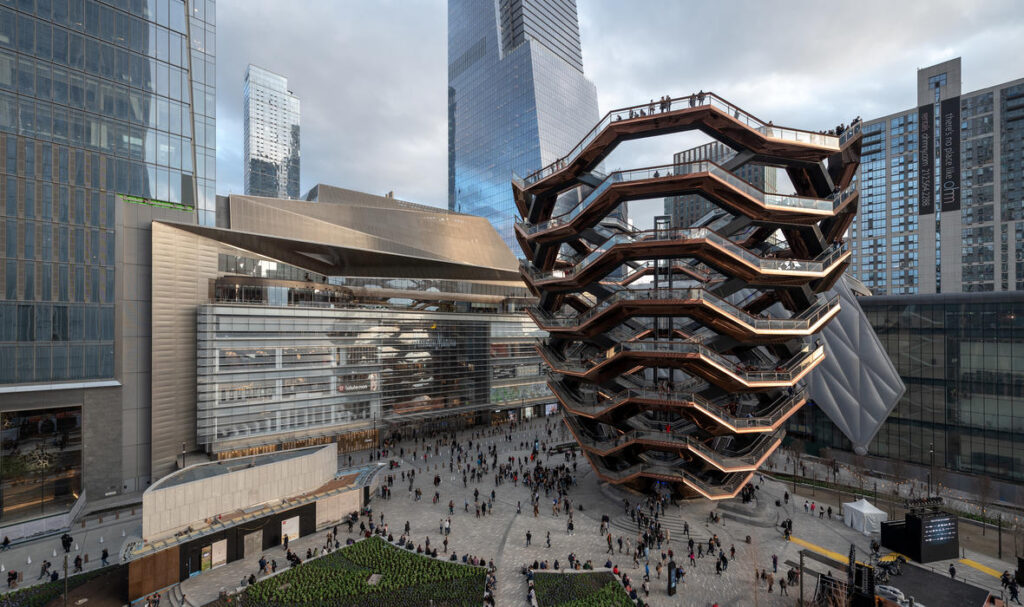The Impact of Advanced MEP Design Technology on AEC Relationships

The AEC industry is a highly collaborative one that relies heavily on strong relationships among professionals. One of the most significant advancements in this industry is the development of advanced MEP design technology, including Artificial Intelligence. This technology is changing team collaboration, enabling them to work more efficiently and effectively than ever before. Let’s take a look at how it is impacting AEC relationships.
What is the Significance of Good Relationships in AEC?
Good relationships are critical to success in the AEC industry. The success of any project, large or small, depends on teams of professionals working together on complex collaborations where detailed communication and trust among partners is essential.
Effective collaboration creates opportunities for faster project completion, improved precision, stronger creative problem-solving, and greater efficiency with financial resources used throughout the project lifecycle.
Good relationships also serve as building blocks for understanding differing opinions, needs, and expectations between team members when dealing with the intricacies of project design and execution.
Ultimately, having strong relationships within the AEC industry provides a foundation for sustained growth, project success, and industry partnerships that will endure over time.
The Impact of Advanced MEP Design Technology
Allows Creating More Detailed Models
The use of Advanced MEP (Mechanical, Electrical, & Plumbing) Design Technology, including AI, is having an increasingly positive impact on the relationships between Architects, Engineers, and Construction (AEC) firms.
The past 20 or 30 years has seen a gradual degradation of the quality and accuracy of the MEP drawings issued by MEP design firms. Downward fee pressure, an increasing number of changes, and the need for expeditious issuance of drawings has resulted in more and more shortcuts being taken in the preparation of MEP documents. Most MEP drawings issued today are considered diagrammatic, intended to convey the scope of the work, rather than how it is specifically intended to be constructed. This ambiguity creates friction and conflicts in the field, which could be avoided with more accurate and concise design documents. These field issues create friction and disagreements between the AEC professionals, as costs mount and schedules slide, damaging relationships in the process.
Advanced MEP design technology is now providing AEC professionals the ability to create highly detailed models of the systems and services that are incorporated into a project during the design stage. These models help architects and owners to better visualize and plan their projects with greater accuracy and effectiveness.
Furthermore, this technology allows engineers to produce highly detailed and coordinated models of their MEP systems that are more precise than ever before. By having access to precise plans of how these systems will interact with each other in a building, the AEC professional can produce an optimized plan more rapidly while confidently knowing that all aspects of the job can be executed successfully.
Collaboration & Coordination
With the introduction of these advanced MEP design tools, the compromises made during design to meet fee budgets and project timelines can be minimized, improving relationships between all AEC stakeholders due to the collaborative benefits. It enables MEP engineers to interact with designers and end-users more efficiently so they can focus less on the non-visible components and pay more attention to the client’s requirements and expectations, which is paramount for overall building design satisfaction.
In turn, this leads to a better understanding of said requirements and allows collaborative efforts from design through construction, further developing meaningful connections between colleagues in the field. Ultimately, AI is improving the human aspects of the AEC design and construction cycle through optimization, improved accuracy, and reduced timelines to produce better drawings.
Still, as long as these human interactions remain essential in the process, the combination of old-school collaboration habits with modern AI technology will be crucial for creating successful AEC projects.
Internet of Things (IoT)
With the rising popularity of connected technologies, such as Internet of Things (IoT), BMS and all manners of building operational sensors, architects, engineers, and contractors are experiencing unprecedented opportunities to improve their clients’ building operations post construction.
IoT and other sensors are capable of collecting real-time data on building systems like HVAC, lighting, occupancy, weather, and security so that owners can consolidate vast amounts of data points to gain valuable insight into how their systems are performing. This data also helps identify possible energy losses, while providing remote monitoring and control capabilities.
Beyond understanding performance issues, these same IoT sensors can be used to optimize energy consumption in buildings by sensing occupant presence, temperature changes, integrated equipment operational parameters, and more. The use of AI technology to analyze and use this data for better systems control is an exciting new way to help decarbonize building operations and provide a better environment for the building occupants. Additionally, with smart buildings enabled by IoT technology AECs have the capability to offer personalized experiences for occupants, such as personalized lighting and temperature settings, all while improving building efficiency and reducing its impact on the environment.
Building Information Modeling (BIM)
BIM has a meaningful impact on how stakeholders in the MEP industry collaborate throughout projects. While traditionally, each party would have worked in silos, modern BIM software platforms enable them to easily liaise and streamline their workflows.
Through BIM, these teams can gain incredible insights into effective collaboration, enabling smoother transitioning throughout project life cycle stages, such as design, construction, and management.
Not only does BIM improve the speed of the process itself, but it also minimizes the margin for error by accurately visualizing designs during the pre-construction stages and having all data stored in a centralized location.
BIM allows AEC relationships to shift from transactional to strategic partnerships, where experts work together in creative problem-solving initiatives – ultimately leading to more successful outcomes for all parties involved.
Hudson Yards Development
One real-life example of how Advanced MEP Design Technology has improved efficiency and quality control on AEC relationships is the Hudson Yards’ retail development in New York City. To ensure success, the project team relied heavily on digital scan survey technology, AI for MEPTM software, BIM modeling software, and other advanced MEP design technologies.

The MEP design team worked closely with Related’s retail team and the tenant delivery team at Rothschild Downes to deliver a highly integrated package for all retail tenant fitout work in the project’s central core in record time due to the tight timeline to get all tenant spaces ready for the grand opening of the project. The team used point cloud scanning to gather up-to-the-minute, as-built conditions from the shell construction, which was converted to Revit® BIM software to design complicated HVAC systems that were integrated with the building’s architecture and utilities infrastructure, while also taking into account unique environmental conditions that were presented by the multi-story open atrium configuration of the space. This process, combined with AI for MEPTM optimized design, allowed for the early identification of any construction variations, errors, or clashes with the designs, minimizing delays and eliminating reworking costs.
Moreover, BIM allowed for the seamless planning of the tenants’ work before the actual installation started, providing a graphical representation of the building’s systems that dramatically reduced errors during installation, thus saving time and preventing unnecessary costs. By incorporating advanced MEP design technology, the Hudson Yards project team was able to coordinate effectively and achieve superior quality control, even with a large, complex project with a tight timeline for completion. The use of BIM facilitated better communication among everyone involved in the project, leading to less project delays or mismanagement by designers, architects, engineers, and contractors.
It played a role in delivering the project-related goals with improved efficiency and quality without project cost overruns or delays. Ultimately, this enabled the team to complete the development on time and fully occupied on grand opening day.
Conclusion
The impact of Advanced MEP design technology on AEC relationships is undeniable; it enables increased collaboration between different disciplines while also facilitating improved efficiency and quality control measures throughout all stages of each project.
AI can play a huge role in optimizing the architectural and engineering capabilities of MEP, making your projects come together in less time and with fewer glitches. With Schnackel Engineers’ extensive understanding of Artificial Intelligence solutions for MEP, you can enjoy superior building designs that achieve optimal efficiency in the process.
As the leading provider of AI-driven MEP solutions, we at Schnackel Engineers will lend our expertise to ensuring the successful deployment of your optimized AI for MEPTM project.
So, if you are looking to utilize Artificial Intelligence to ensure your design process is smoother and quicker than ever, then let us show you what we can do!
Comments